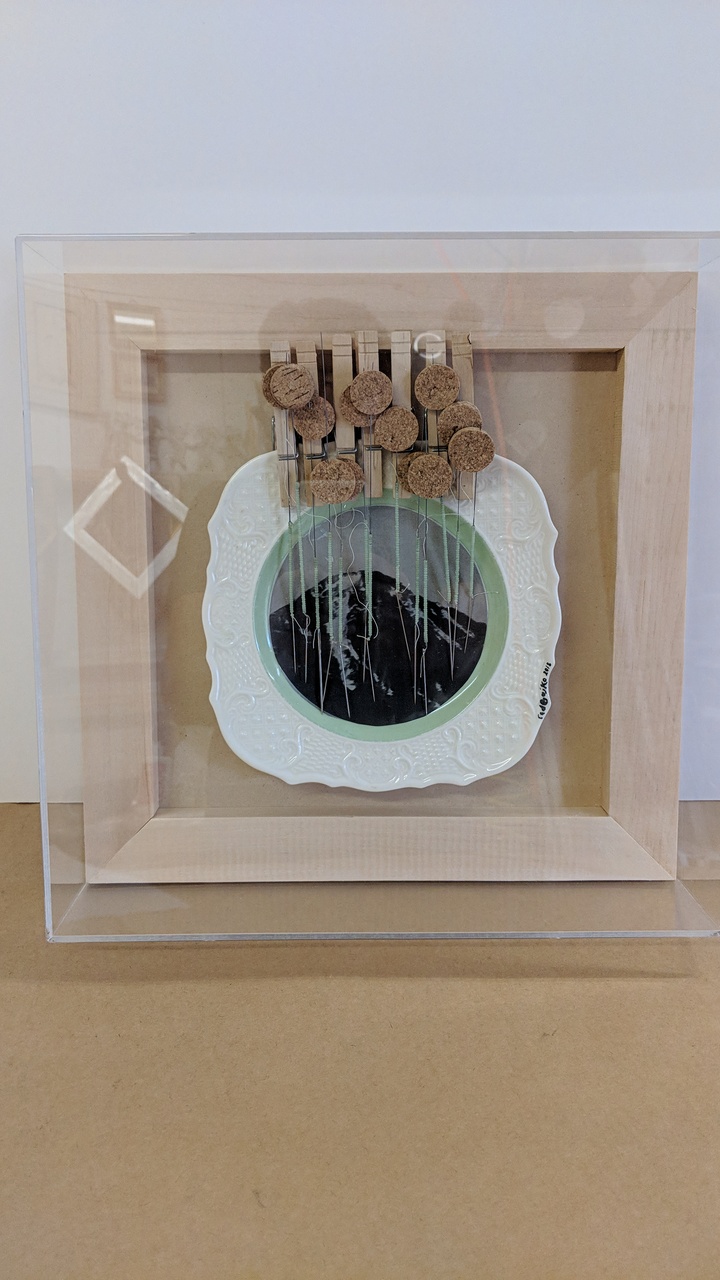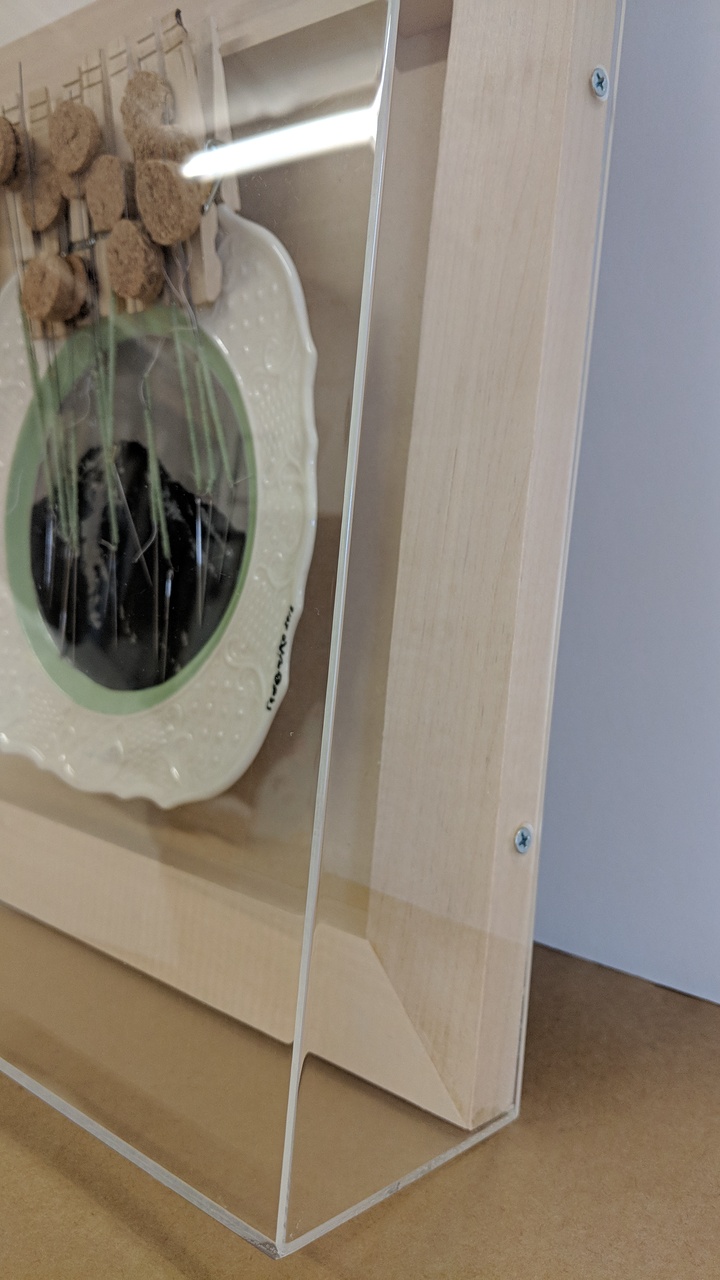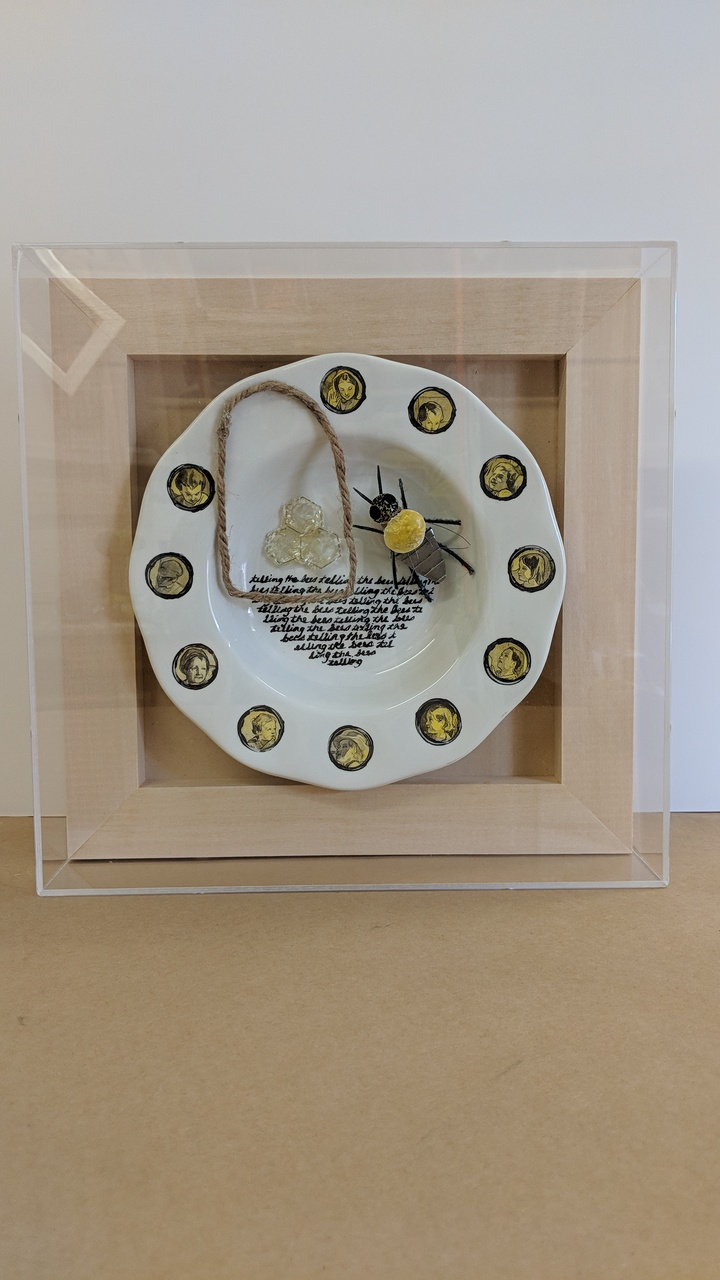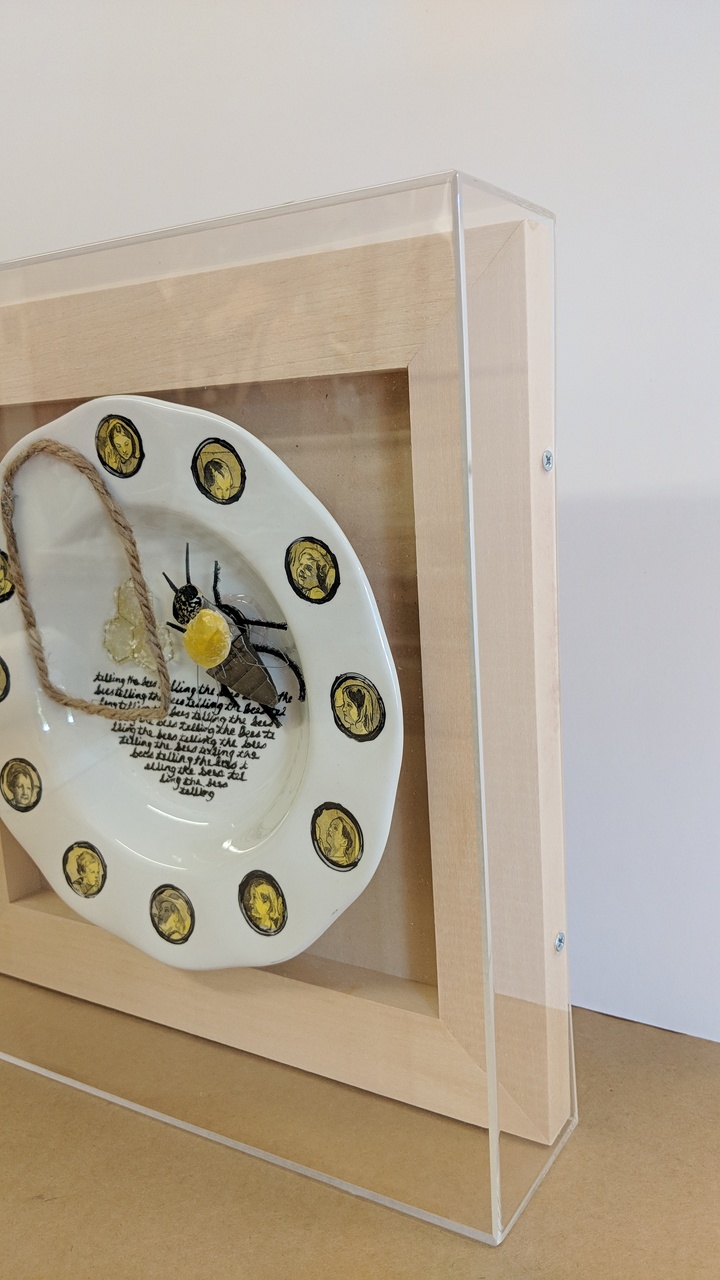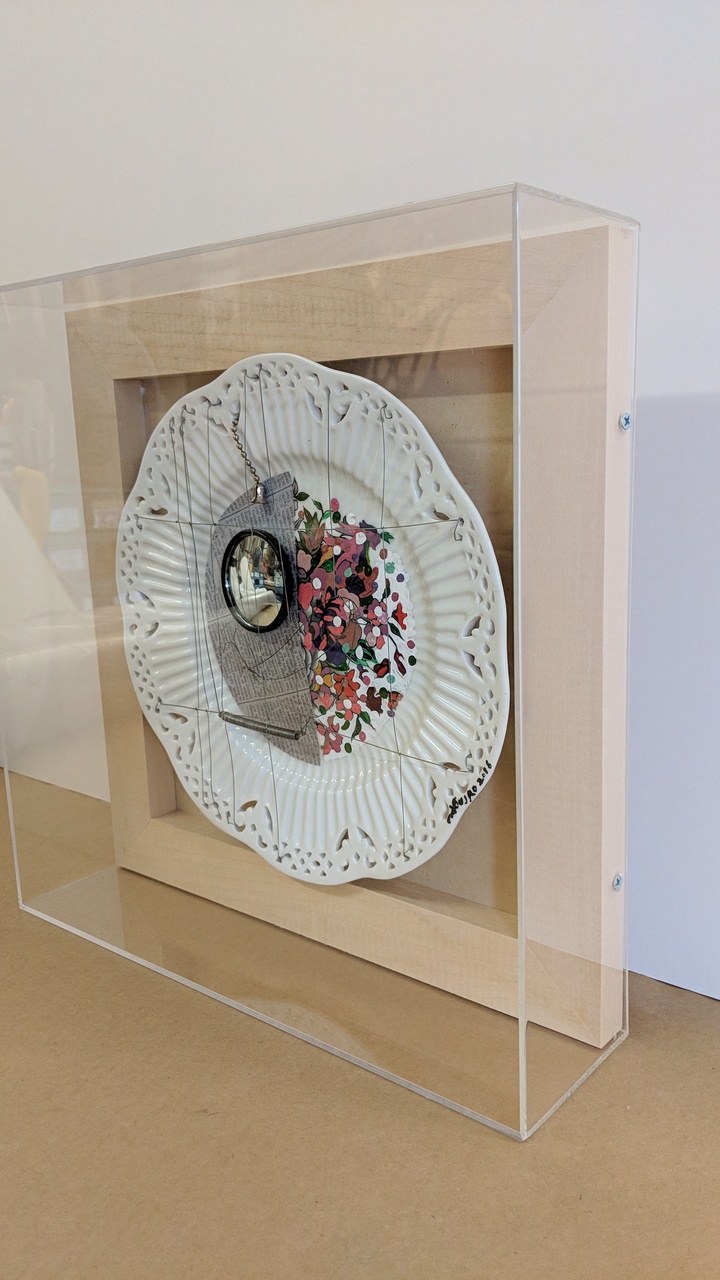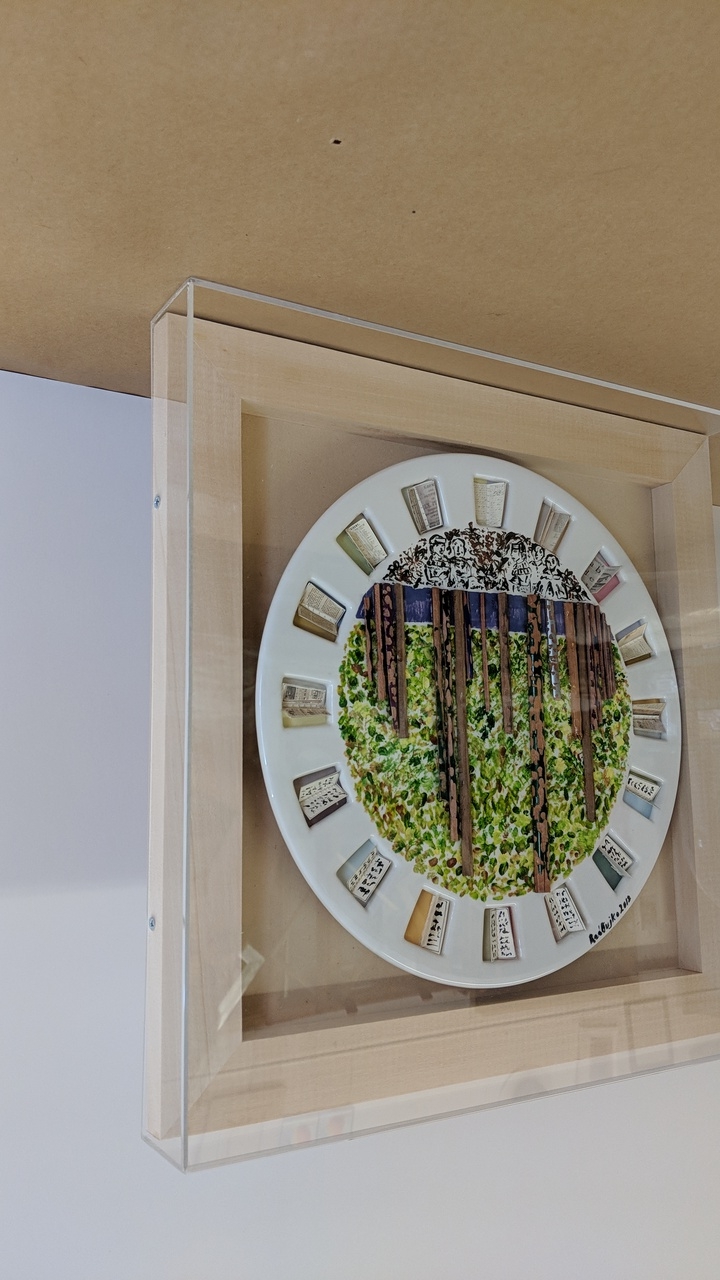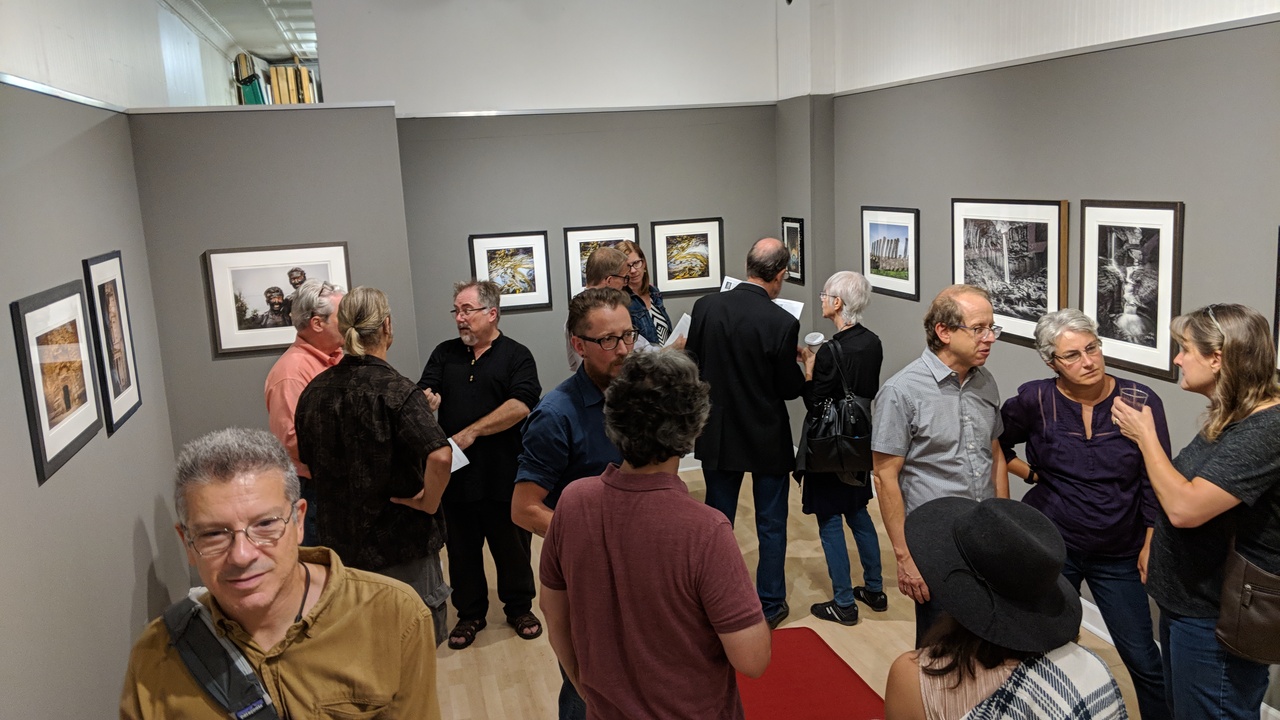The fall exhibits began with “Transantiago: Chronicles Concealed.” This show was the first time Colectivo Dunne Hermosilla had work shown in the United States. The Chilean collective is three men, Cristóbal Cohen, Gregory Dunne and Marcelo Hermosilla.
The series provided a way for an audience in Connecticut to look through windows to view streets of Santiago, Chile. At the opening night it was clear that the audience was interested in the potential stories behind the people featured. Viewers questioned whether one woman looked sad or lost in thought. A bus driver can be seen through colorful reflections on the window, unaware that this day has cast him as the centerpiece of a work of art. The collective has created a show where the audience becomes commuters on the streets of Santiago.
There are 21 pieces in the show, representing 21 windows through which the group shot their photographs. The grime and dirt is not avoided or edited out, but rather used as an abstracting feature of the pieces. The effect is a series of photos that have a modern art quality, abstractions that cause the audience to take a step back and view pieces at different angles. Once the viewer pieces together the image, often a familiar scene can be found. Despite the differences in cultures, the manner in which this Chilean art group created their series allows for audiences all over the world to feel a connection to Santiago. Their intention to show the contrast between "urbanity and humanity" is recognized and shows through.
In a different manner, our current show "Zen con Son" requires viewers to add together visual clues to understand the completed image. Miguel Trelles is a Chino-Latino artist. His Cuban and Puerto Rican heritage paired with growing up in Puerto Rico gave him a rich knowledge of the Greater Antilles. As an art lover and a curious mind he studied art history and found a connection with Chinese Art throughout the ages. He recognized a similarity between the scenery depicted in Chinese art and the landscape in the Greater Antilles.
To the average observer, the first thing that draws them in is the bright color and often foreign symbolism. The intrigue is in attempting to break down the reasons behind the potentially conflicting subjects. To those familiar with Chinese art, the symbolism is a lot easier to identify but the interest is in the modification that Trelles has made.
The audience at the opening was a mixed group. Many seemed able to break down and understand the majority of his influences. His combination of cultures shows through in a way that highlights each one rather than creating an entirely new style. He pays homage to his own cultural background as well as shows his tremendous respect and knowledge of Chinese culture.
-Shaylynn McGrory can be reached at shaylynn@dasilva-gallery.com





